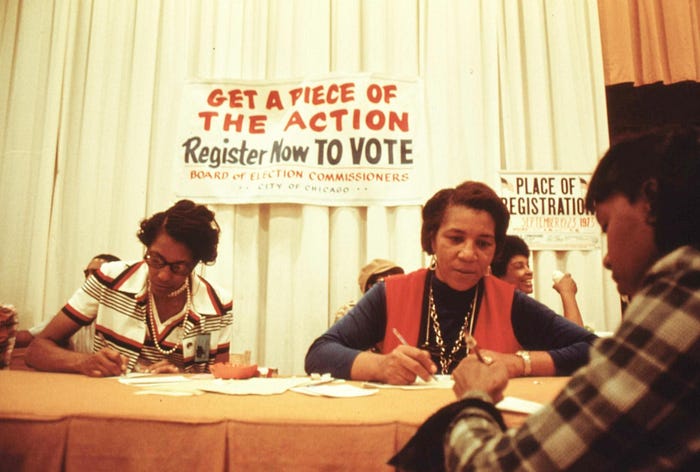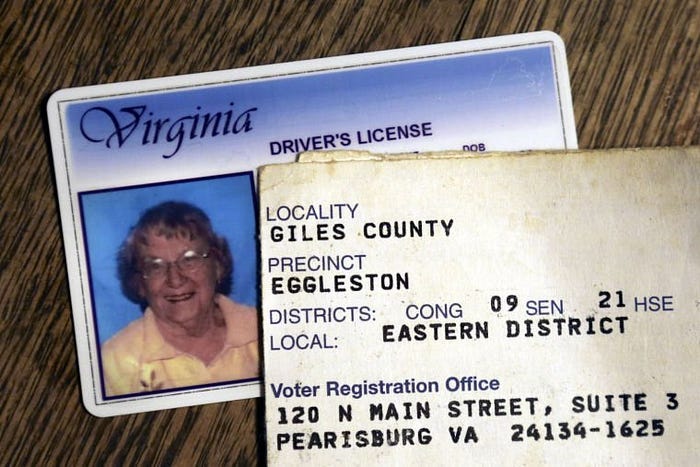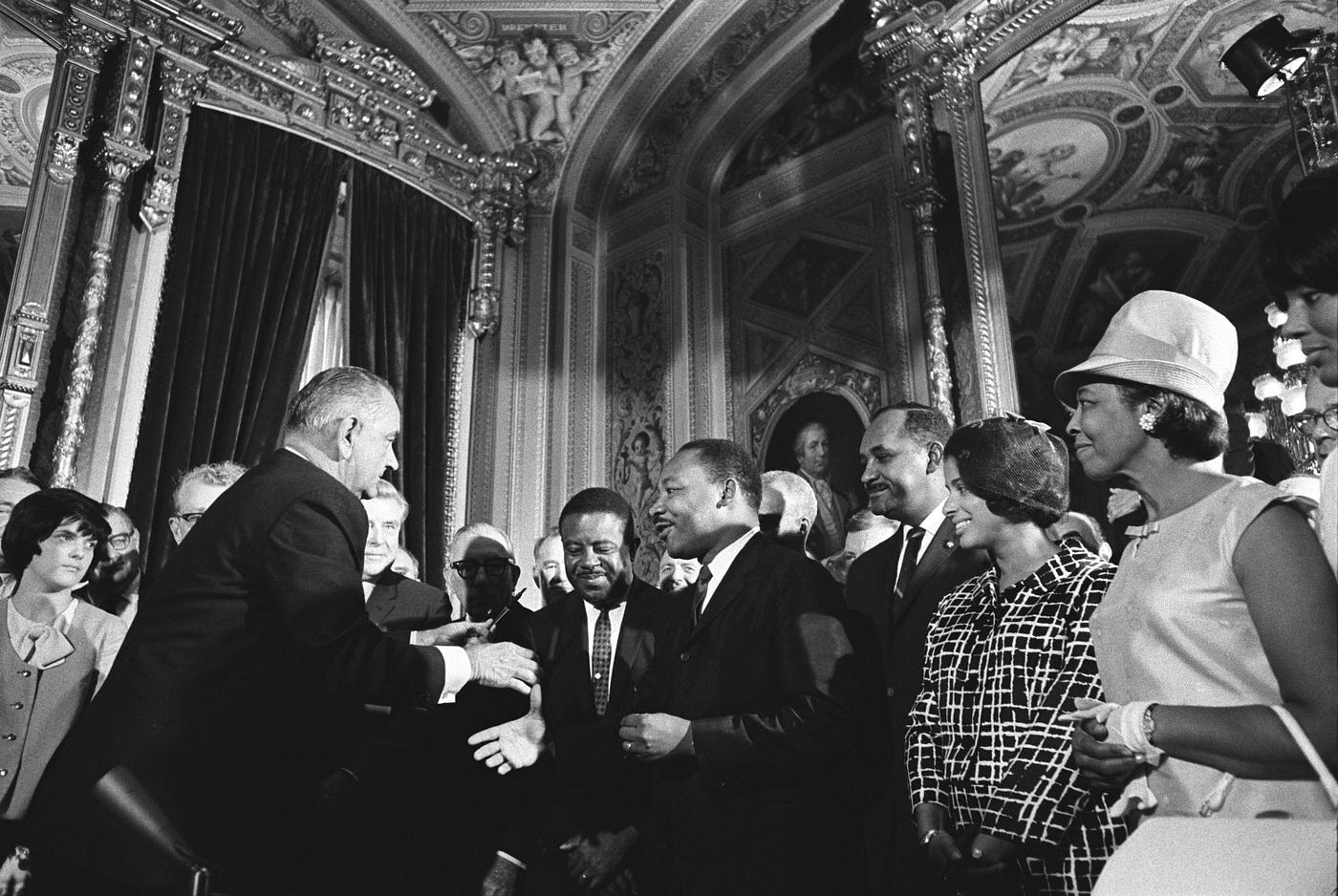The Legacy of MLK: Our Legacy, Our Vote
A brief exploration of the past, present, and future in 2022.
Voter Registration Drive at the 1973 Black Expo

Voting largely left out nonwhite men and women, regardless of color, for much of American history. This voter registration drive at the Black Expo in Chicago, Illinois, took place in 1973, just eight years after the 1965 Voting Rights Act was passed.
Music for the Movement: Push Play and Carry On……
I promise to think before I speak
To be wary of who I give my energy to
Because it is needed for a greater cause
Greater than my own pride
And that cause is to spread the enlightenment
Of love, compassion, and humanity
Abbreviated Timeline of Voting Rights from 1965:
- 1965: Congress passes the Voting Rights Act (328–74 in the House and 79–18 in the Senate)
- 2006: Congress reauthorizes the Voting Rights Act (390–33, 98–0)
- 2013: The Supreme Court demolishes the Voting Rights Act: Shelby County v. Holder (5–4)

Under the Voting Rights Act, jurisdictions with a history of voting rights violations — like Shelby County and the rest of Alabama — required federal approval for any new laws or rules affecting elections. This provision is known as preclearance.

Virginia Whittaker said she didn’t renew her driver’s license after 2012 because by then she was no longer driving. It ended up costing her the right to vote in the 2014 general election, because in 2013, the Virginia General Assembly passed a law requiring voter photo ID.
Rolling Back Time: More Impacts
- Across the country, 1 in 16 Black Americans cannot vote due to disenfranchisement laws.
- Counties with larger minority populations have fewer polling sites and poll workers per voter.
- In 2018, Latinx and Black Americans were twice as likely as whites to be unable to get off work while polls were open.
- 25 percent of voting-age Black Americans do not have a government-issued photo ID.
- Geographic isolation is a major barrier to Native American voters due to the inaccessibility of nearby polling locations in many reservations. In South Dakota, 32 percent of Native voters cite travel distance as a factor in deciding whether to vote.
- More than one-sixth (18 percent) of voters with disabilities reported difficulties voting in person in 2020.
- Nearly two-thirds of polling places had at least one impediment for people with disabilities.
Source: ACLU: Block the Vote: How Politicians are Trying to Block Voters from the Ballot Box


Texas permits voters to use a handgun license to vote, but not a student ID from a state university. More than 80 percent of handgun licenses issued to Texans in 2018 went to white Texans, while more than half of the students in the University of Texas system are racial or ethnic minorities.

“There is no Negro problem. There is no Southern problem. There is no Northern problem. There is only an American problem.”
Lyndon B. Johnson


